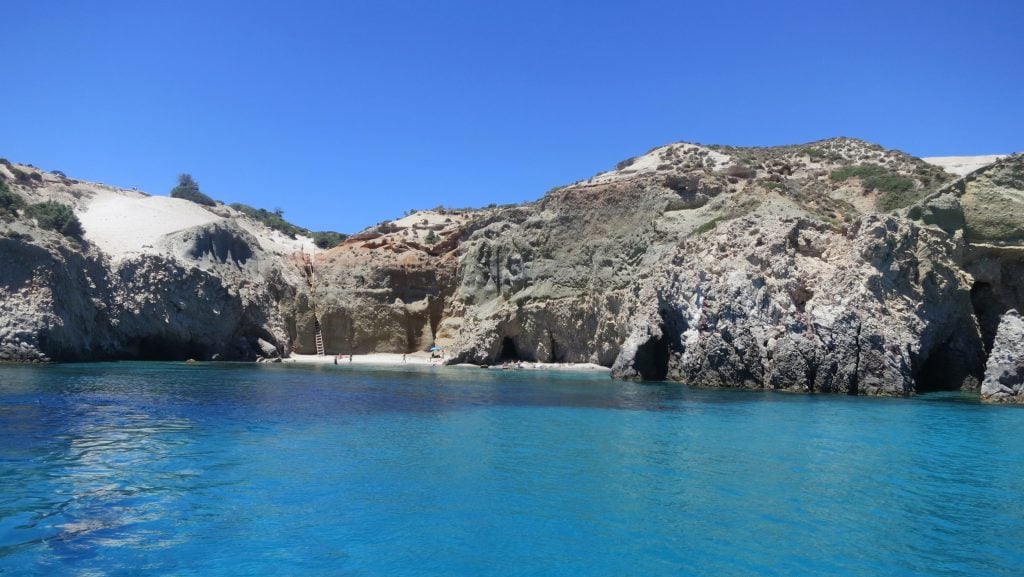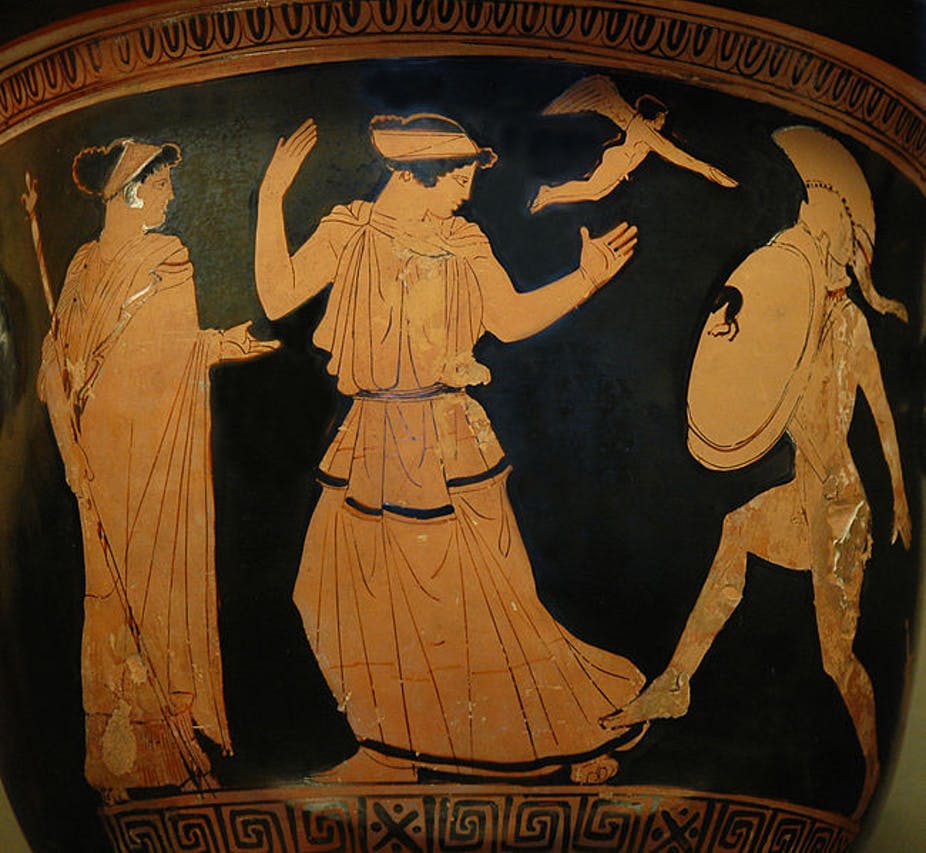
Although Greece is full of many shades of blue—iconic blue roofs found across the islands, rich sapphire seas, and bright blue skies—linguists and experts on the ancient world have long been puzzled by the conspicuous absence of a distinct word for the color in Ancient Greek.
Yet does this mean that Ancient Greeks could not see the color blue, as some argue, or that they just saw it differently, considering it not as a distinct color, but as part of a spectrum of shades?
We know that language, especially regarding colors, has a significant impact on the way we experience the world around us. As linguistic philosopher Ludwig Wittgenstein wrote, “The limits of my language means the limits of my world.”
The Color Blue in the Ancient World
Surprisingly, the word ‘blue’ is simply missing from nearly all other ancient languages. There is no distinct word for the color in Chinese, Hebrew, or Sanskrit. Rather, the color that we call blue is usually grouped in with other colors, such as green.
Egyptians, however, did have a distinct word for the color blue, and not surprisingly, they were one of the only ancient peoples who began creating blue dye very early on in their history.
In the history of nearly all languages, the word for blue emerged much later than other colors. Through careful examination of ancient texts, linguists have discovered that almost all languages followed a fairly standard timeline of when names for distinct colors were introduced—black and white are the most ancient color names, followed by red.
In general, the way colors are referred to in Ancient Greek differs greatly from most modern conceptions of them.
Rather than describing a specific color, ancient Greeks frequently referred to the shade or tint of the hue instead, considering colors on a shade from dark to light.

Colors in Ancient Greek
In Ancient Greek, the word kyaenos was often used for colors on the darker end of the spectrum, including what we now know was violet, black, dark blue, brown, or dark green.
Our modern word “cyan,” a greenish blue, comes from this word.
Glaukos was frequently used in reference to lighter colors, including yellow, grey, light green, or light blue. While both kyaenos and glaukos can be used for a range of colors, there were distinct words for the colors included in this range—except for blue.
Classicists have pored over Homer’s Iliad and the Odyssey, searching for any mention of the color blue, but this does not appear anywhere in the texts.
Although other colors such as black, red, white, yellow, and green are all specifically mentioned in Homer, blue incredibly never makes an appearance.
When referring to a specific color, ancient Greeks would often compare it to another object of the same shade.
This makes Homer’s comparison of the sea not to the sky, or another blue-colored thing, but to wine, quite interesting. Throughout Homer’s poetry, the sea is referred to as “wine-dark.”

Strangely, Homer also refers to honey as “green” and sheep as “violet” in his work, leading 19th-century academics to believe that ancient Greeks were all colorblind, or hadn’t yet developed the necessary capabilities to see colors like we do now.
Early Theories
However, science has since revealed that humans indeed developed the ability to see colors on the spectrum of visible light tens of millions of years ago, long before the ancient Greeks.
This colorblind theory was used to fuel racist arguments regarding the biology of non-Europeans in the nineteenth century.
Anthropologists took the theory about ancient Greek colorblindness and posited that, while modern Europeans had evolved past the ancient Greeks and could now see blue, non-Europeans were biologically “delayed.”
This theory gained popularity after anthropologists discovered that Aboriginal Australians living on Murray Island considered the sky to be black rather than blue.
These anthropologists believed that this signaled that the people of Murray Island lacked the capability to see the color. Instead, colors in their language are categorized as light or dark on a spectrum from black to white.
To Murray Island natives, the color of the sky was grouped with dark colors in general without its own distinct name.

Linguists argue that ancient Greeks perceived blue in a similar way. Greeks certainly could see the color blue, but they didn’t consider it separate from other shades, such as green, complicating how exactly they perceived the hue.
Language and Reality
In English, color can function in the opposite way linguistically. Consider the color pink: pink is on the red scale, so if we had no word for pink, it could easily be considered a light red, and we would refer to it as such.
Yet, as we have a distinct name for the color pink, we perceive it as a different color than red.
The Himba people, native to Namibia in southwest Africa, live a life largely separated from Western society, maintaining their ancient traditions, customs, and language to this day.
Uniquely, the Himba people only have five words for color, which describe what most people would consider a group of many disparate shades.
For example, some greens, reds, beiges, and yellows, which many would consider to be wildly different, fall under the same word in the Himba tongue. Most interestingly, what we would consider to be different shades of green, the same color, are perceived as entirely different colors in the Himba language.

When linguists and scientists showed a color wheel featuring green squares, with one of them a very slightly different hue, the Himba people almost immediately picked out the differing shade, a feat that would take most others quite a while to accomplish.
However, when asked to pick out the bright blue square placed among the green ones, the Himba hesitated. While clearly a different shade, it falls under the same color name as green in the Himba tongue.
While some argue that this means that the Himba people “can’t see blue,” it’s clear that they can. They just perceive it in a spectrum of color, much as the ancient Greeks surely did.
See all the latest news from Greece and the world at Greekreporter.com. Contact our newsroom to report an update or send your story, photos and videos. Follow GR on Google News and subscribe here to our daily email!



